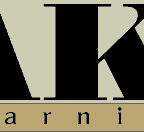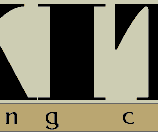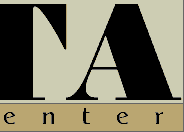 Save this page(81.2 kb)
Save this page(81.2 kb)
THE ESTABLISHMENT OF THE JAPANESE DOG STANDARD
Commentary
(HOW THE JAPANESE DOG STANDARD WAS WRITTEN)
The Development of The Japanese Dog Standard
Every dog breed has a dog standard which describes the essential qualities and body type as a basis for judges. However, an official dog standard had not yet been determined. In June 1928, when the Nipponinu Hozonkai was established, one realized the necessity of such a Japanese dog standard.
Therefore, in September of 1928, a reference commentary entitled, "Japanese dog body types" with subdivisions into three categories: large, medium and small was published for the Japanese dog fans. Tentative statements referring to important body areas such as the head, nose, eyes, ears, neck, chest, limbs, hips, tail, coat and anal areas, and their faults were described.
Nippo was reorganized to undertake the important task of writing the Japanese dog standard. In March 1933, eight members, consisting of Tokio Kaburagi, Shiro Itagaki, Katsunari Kitamura, Yonekichi Hiraiwa, Shinichi Komatsu, Haruo Kaji, Shizuo Kizuka (Mr. Kaji and Mr. Kizuka resigned later) and Mr. Hiroshi (Kokichi, Hirokichi or Hiroyoshi) were named as committee members to draft the Japanese dog standard. Their names were published in the April issue of the first Nippo Monthly Bulletin. In April, Mr. Kitamura was put in charge of the committee to gather data. First of all, written opinions pertaining to the establishment of the Nippo standard were obtained from thirty-one people, which included chairmen of Nippo branches nationwide, members regarded as Japanese dog and domestic dog researchers, people who, were not members of Nippo, nine from the Nippo membership who provided some solutions in replying to our questionnaire that was sent out with the Nippo Monthly Bulletin, four opinionless replies, two frivolous replies, three with details of their observations, especially that of Mr. Hitoshi Shiobara, who is a trustee Nippo’s Kansai region. His written opinion based on the Kishu dog was the only reply that influenced the drafting of the Japanese dog standard. From those who were not members of Nippo, the prominent hunter from Korea, Mr. Maruichi Yoshimura, gave us his personal opinions based on his personal experiences on Japanese dogs that were used for hunting birds and animals based on his personal experiences. At that time, in the domestic dog,world, although many scholars discussed Japanese dogs, many of these were unrelated to our needs.
We soon became quite aware of the scarcity of sincere researchers. In August of 1933, the drafting committee met and a subcommittee consisting of three members, namely, Mr. Kitamura, Mr. Komatsu and Mr. Saito, were nominated. Mr. Komatsu was put in charge to establish a dog survey at the Second Nippo's Headquarters Show that was to be held on November 3, 1933. Besides surveying actual living dogs of the various types, Mr. Komatsu was put in charge of gathering data on the excellent dogs that were being shown.
The Japanese dog standardbeing one of the most important projects was announced in the January 1934 issue of the Nippo Monthly Bulletin.
In July of 1934, the subcommittee met again and decided as first priority that Mr. Saito will draw up a standard. After researching various data and articles, he was able to complete this by mid-August, based on the following subcommittee's specifications:
1. Confirmation of the main points;
2. Brevity;
3. Fundamental principles (outline) as the essentials (gists) without details.
The foregoing three main points came from sources such as:
1. Questionnaires;
2. Opinions and theories on Japanese dogs from ancient times and data;
3. Opinions and theories that were published, in the Nippo Monthly Bulletin;
4. The Nippo policy of judging Japanese dogs;
5. Types of Japanese dogs in various areas at the present time;
6. Foreign dog standards especially of those breeds with standing ears, curled tails and body types, as well as the standards of working dogs;
7. In the future, How should one expect as working dogs from Japanese dogs with their identifying characteristics, with what theme in mind, the first draft was drawn.
On August 25, 1934, the subcommittee met again to revise the original draft after much discussion and consultations. This draft was mimeographed and distributed to members of the drafting committee, Japanese dog judges among the trustees, to military dog researchers from the Japanese army, and to private working dog researchers not employed by the government, in order to obtain their opinions for the second time.
The subcommittee met again on September 2nd,1934 to review the written replies and opinions and revised to come out with a seconddraft. Mr. Genzo Satoda, who is a trustee of the Kansai Branch, went to Tokyo as a representative of the branch to attend this subcommittee meeting.At the first draft, six written opinions in response to questions were received. Among these were detailed and cordial opinions from First Lieutenant Mitsutake Arisaka from the calvary, who responded in spite of his busy schedule at Narashino Barracks. Detailed responses were also received from Dr. Nobuhide Maniwa, a veterinarian of first class. Colonel Soichi Imada of theinfantry also rendered his opinion on dog standards based on extensive knowledge on this subject. We are also grateful to Mr. Yasuo Soma (or Soba), who has studied working dogs, for his opinions on the chest, limbs, hips, etc. From our membership, three of our trustees: Shiro Itagaki, Hitoshi Shiobara and Hyoemon Kyono also rendered their earnest detailed opinions. The first and second drafts were revised to createa third draft. Mr. Satoda from the Kansai Branch was also in attendance. At the September 12th subcommittee meeting the writtenopinion from the Kansai Branch was used as one of the references and with the participation of First Lieut. Arisaka, the fourth draft was created after minor revisions. The last subcommittee was held on September 15 with an emergency headquarters trustee meeting. Using the fourth draft as a basis, after much discussion, the Japanese dog standard was agreed upon. At the trustees meetings that were held on the 4th and 15th of September, and with Itagaki and Hiraiwa as members of the drafting committee, worked on what were believed to be appropriate terminologies.
This was finally announced on the evening of September l8th to the various dog organizations in our country, to representatives of various dog magazines, to those who assisted in drafting the standard who were invited to the Rokyfuso (probably the name of a restaurant) in Tokyo, to trustees from Tokyo who were supporters and who were in attendance to announce the establishment of the Japanese dog standard, to various dog magazines, influential newspapers, to thirteen dog organizations in nine foreign countries with whom we have had communications, we will be sending copies of English translations of the original Japanese dog standard that were written in Japanese by our overseas trustee, Mr. Ichiro Hata.
Within our organization, we made our formal announcement through issue no. 15 of our Nippo Monthly Bulletin that was published on November 1.
NIPPO 50 SHUNEN KINENSHI (ANNALS OF NIPPO'S 50TH ANNIVERSARY), First Volume, pp. 77-78, 1978.
Translated July, 5, 1999.
Revised November 29, 1999.
(Words within parentheses were added by the translator Tatsuo Kimura)









